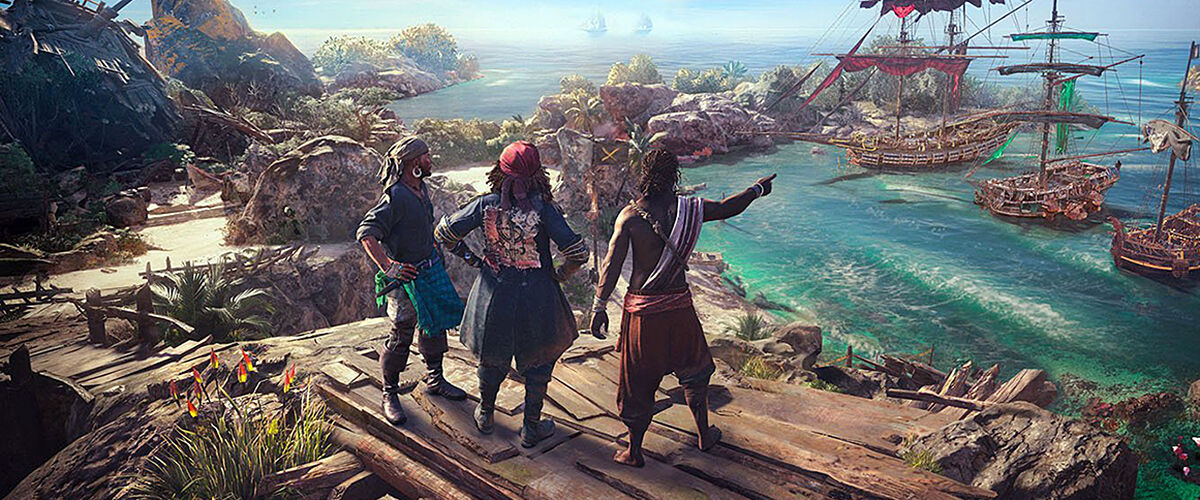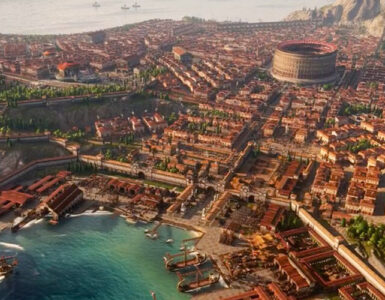As the legendary tale goes, Ubisoft Singapore was working on naval battles for 2013’s Assassin’s Creed IV: Black Flag and so impressed the higher-ups that a whole new game was greenlit. But what would have been the pride and joy of the Singapore office ended up in a dramatic and dragged out development hell for over a decade, mired in multiple changes in the game’s direction and scope, with reports of blown budgets and constant revisions of gameplay design.
After eleven years in development, Skull and Bones is supposed to be the answer to many hopeful gamers’ prayers for a new, modern, pirate-themed, open-world game, however, like many ships during the Golden Age of Piracy, this belongs in Davy Jones’s locker, suitable only for a very select group of gamers.
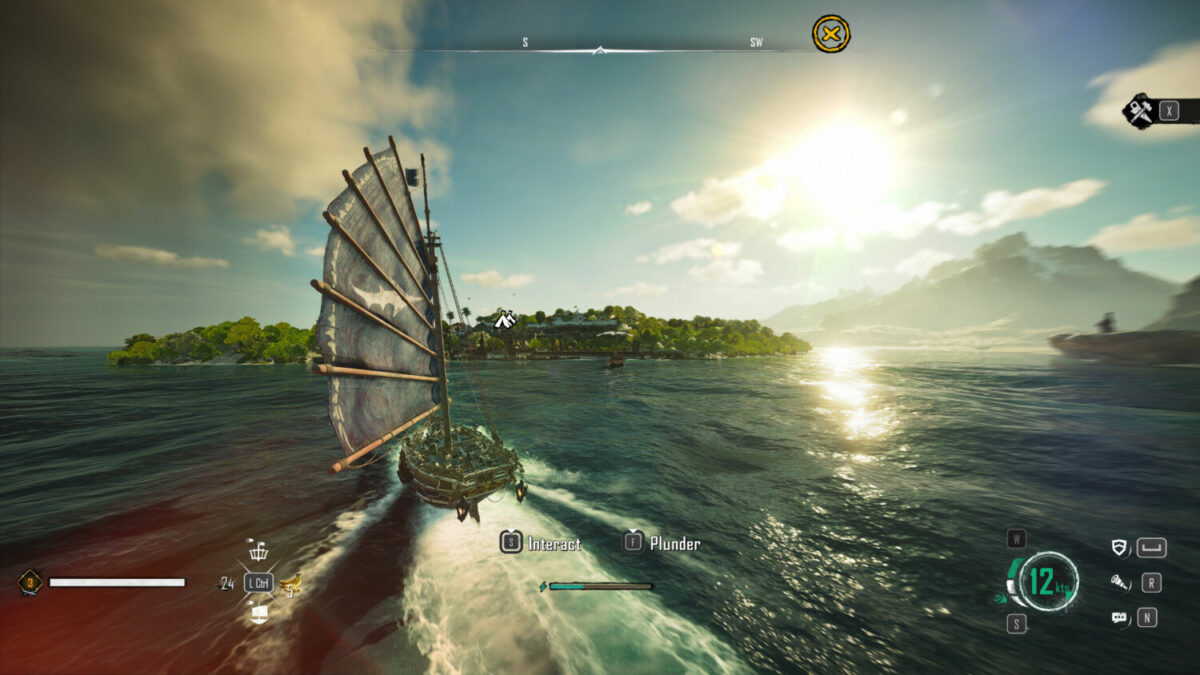
Skull and Bones opens in the way many open-world style RPG games do, with a dramatic event filled with high-level equipment (to give players a taste of the exciting gameplay yet to come), only to leave you marooned with a dire predicament – the ship you were a crew member of has sank after an intense naval battle. As you regain consciousness you find yourself floating on driftwood and as your character leans over, you catch a view of yourself in a puddle of water – it’s time to create your character. Through a very basic set of customisation options – hair type and colour, preset facial features, body type, and body marks – your in-game avatar takes shape and already, cracks start appearing when you realise that this customisation is very rudimentary, and, somewhat shockingly, not all the customising options (like body marks) are observable in the avatar presented before you.
With some basic tutorials, you will spend the first few hours learning the fundamental mechanics of the Skull and Bones world: seafaring, resource gathering, naval combat, crafting, outpost-raiding and how to pursue main and side quests. With these mechanics established, you are released into the game’s world to brand the seas with your own form of piracy. What trade routes will you raid, what islands will you plunder, and what name will you make for yourself?
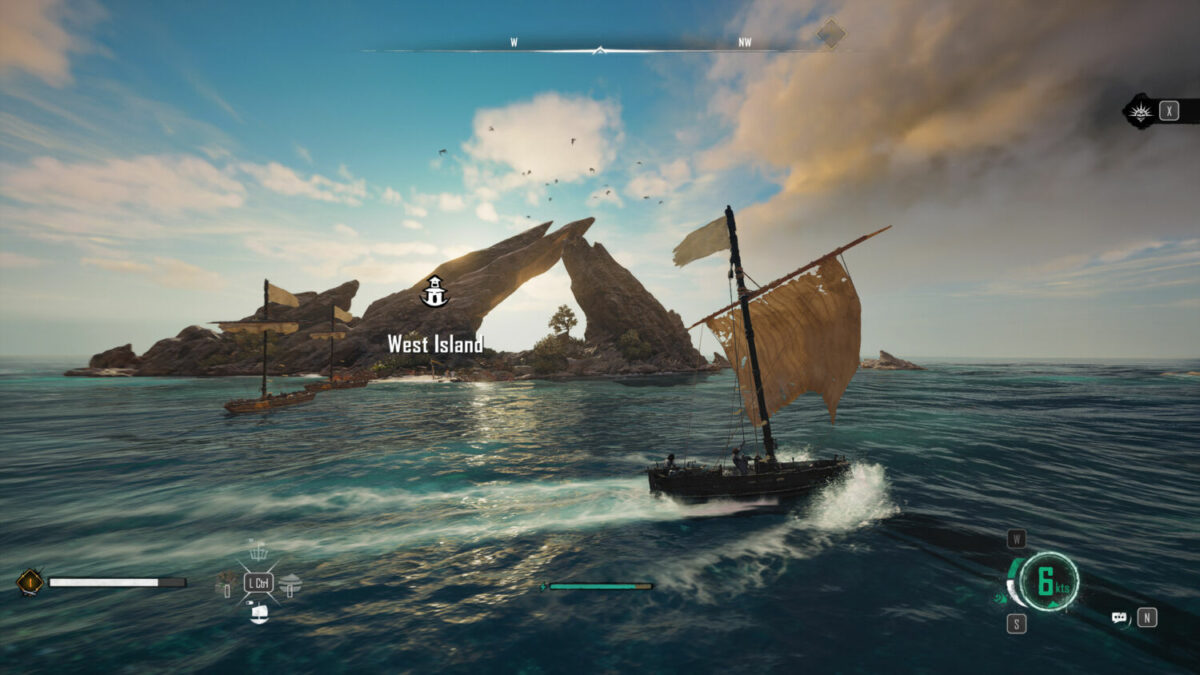
It’s in these first hours that many gamers may find both their wonder and worry about the game. Spot divine-looking angel rays peeking through your sails as you cruise along gorgeous tropical turquoise water? You may wonder what other stunning sights this game will offer. Did you find that the resource-gathering mini-game feels (and sounds) like a free-to-play mechanic at best, and a mobile game at worst? You may be worried about what other mechanics may feel bland and half-baked in Ubisoft’s latest offering.
At its most basic, Skull and Bones is a vehicle-based RPG and your time will be spent on three types of engagements – questing, crafting/customising, and combat. Questing proves the most tedious, crafting and customising the most creative, and combat the most exciting.
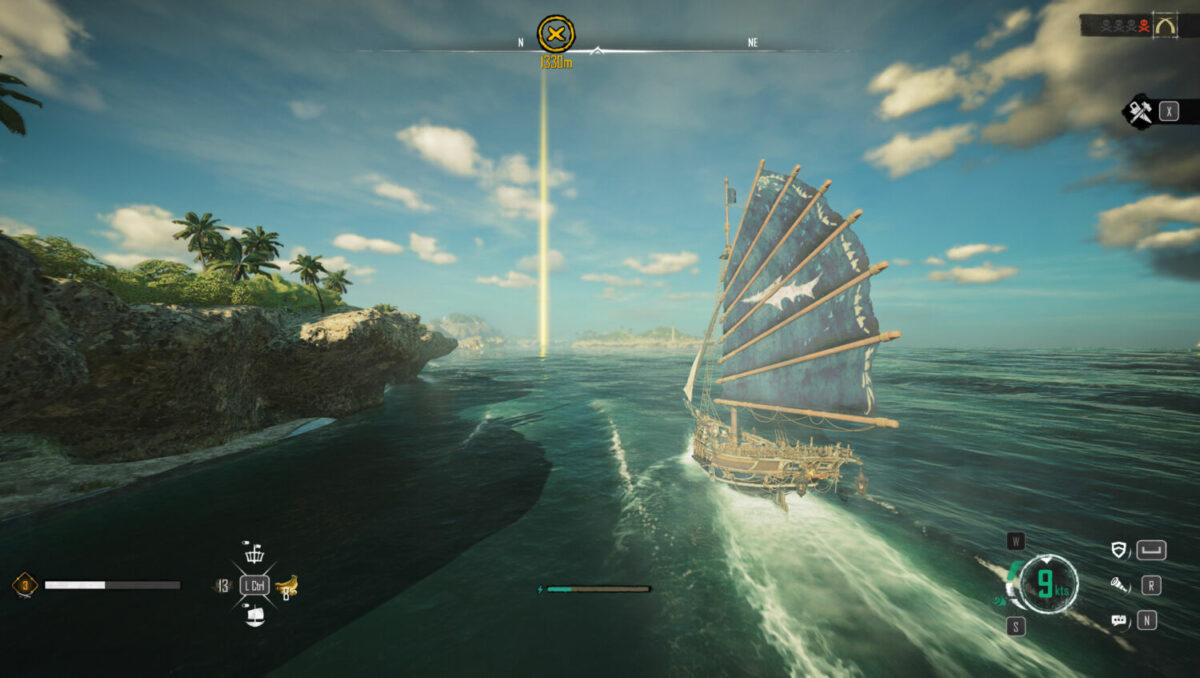
You can move around the world of Skull and Bones in two ways, as your avatar on foot, or onboard a vessel on the high seas. As a human, you will travel around one of two locations: Pirate Dens and Pirate Outposts. Dens are the larger hub-worlds where you will find your typical NPC-run shops, your mailbox, contract boards etc. Outposts are smaller hub-worlds where you will find one or two NPC trader-merchants, often a treasure box, and some pickable loot, and both serve as fast travel locations.
Neither of these locations are particularly big, and they serve mostly as places to manage inventory, start (and submit completed) contracts, craft items (or cook food for combat-related buffs), and customise your avatar and vessel. The NPCs in these locations are bland, with questionable facial animations but decent voice acting. These locations, while small, do have visual and cultural distinctiveness making them more engaging – the items and structures of the African locations are noticeably different that those of the South-East Asian locations.
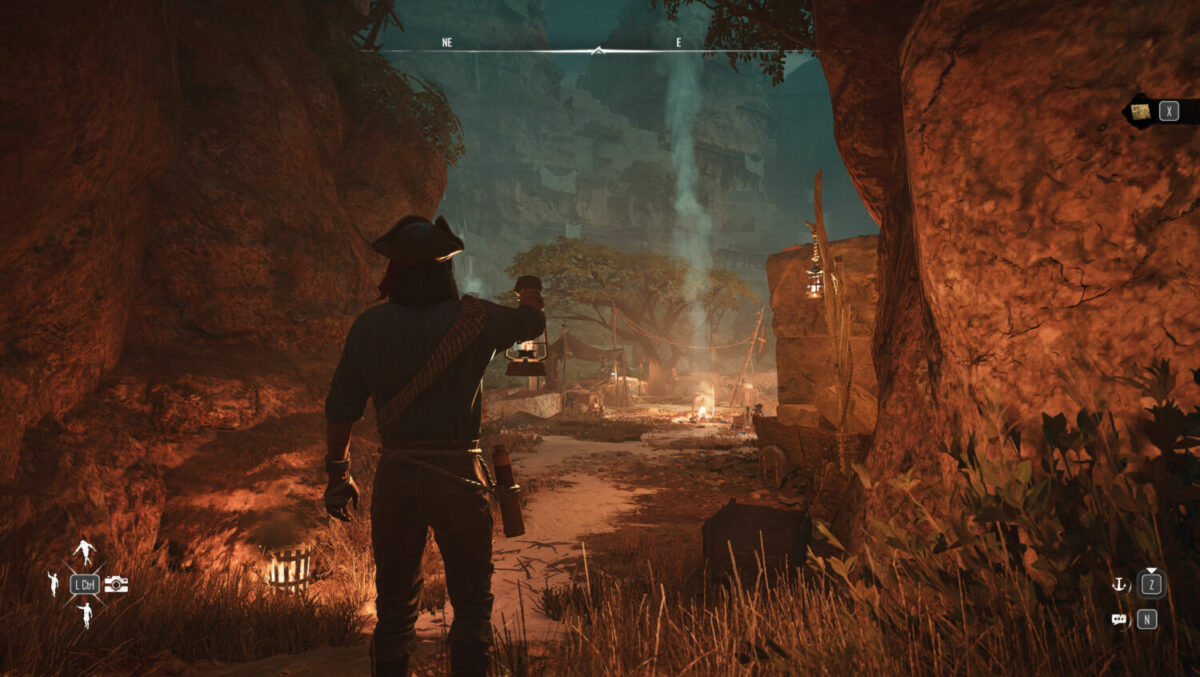
Your ship is where you will do the real exploring and engage in the game’s combat offerings. As a naval vessel, you will have free reign to sail to wherever your heart desires. Sailing along the coast will provide chances to harvest resources to be used for crafting upgrades and buffs, or, if you follow the marked-out trade routes on your map, the chance to raid vessels for their supplies to be used in crafting and upgrades. Sailing further out will give you the chance to encounter larger, more dangerous vessels, and the opportunity to plunder the smaller settlements or larger forts for their loot. Once you’ve decided to begin a plunder, you will have to defeat successive waves of enemies of increasing difficulty to obtain the most valuable loot. If the situation starts feeling a little too risky, you can always disengage by sailing out of the boundary. Engaging any ship of a certain faction will gain you a “wanted” level with them, making any vessels from those factions more prone to facing their canons towards you once they catch sight of your ship.

For better and for worse, game vessel combat is basic, arcade-y and relatively fast-paced, as you are able to utilise various types of weaponry from multiple parts of the ship, choosing weapons on the port, starboard, bow, and stern, based solely upon where you are aiming from. Once you’ve gotten your sea-legs, you’ll be able to easily release a broadside from your port cannons, turn your bow to the enemy vessel and release a volley from your front-facing weaponry while your port weapons are reloading. These moments of quick weapon swapping are exciting and engaging, and when facing multiple enemies, they demand a certain level of awareness as you pay attention to the dangers all around you.
Ramming is also a useful mechanic, and with the right angle, and amount of speed, you’ll be able to engage in a rather brutal form of vehicular melee combat. Boarding vessels, which will earn you extra loot, is a matter of timing a button press, whereby players activate a cutscene that gets old really quick. If you lose in any combat encounter, there is an option to respawn a few times for a small (affordable) fee to pick up your dropped loot, or the chance to respawn (without any cost) at your last port-of-call.
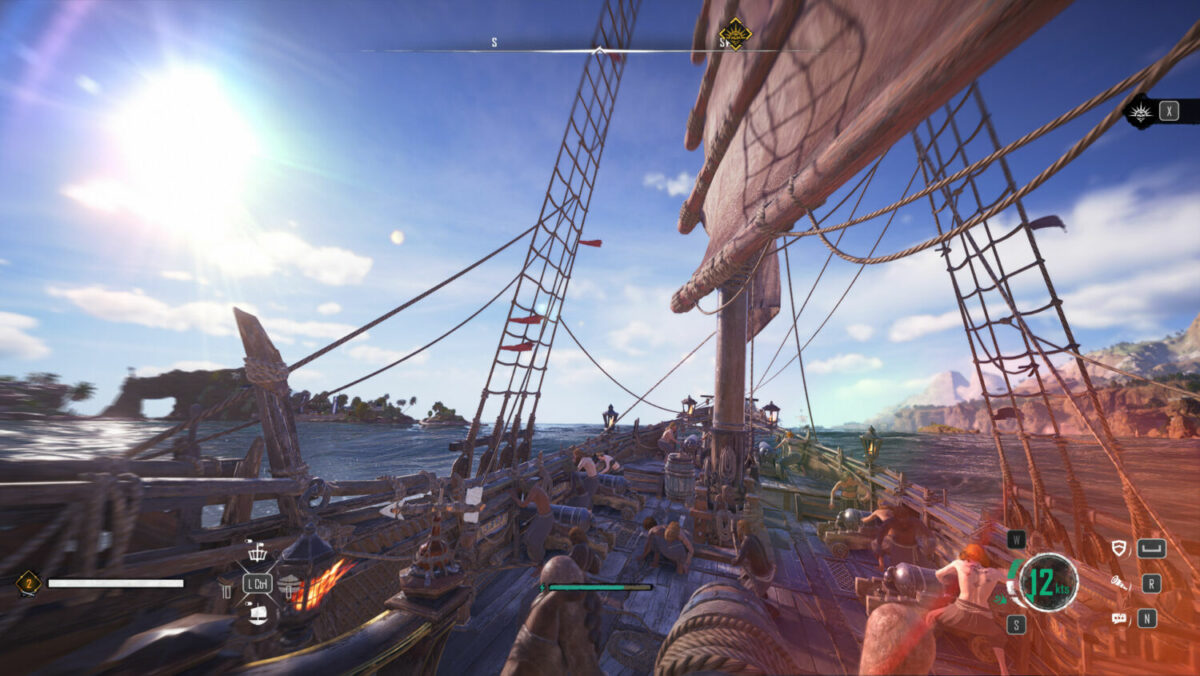
When not in battle, you’ll be able to customise your vessel with different armaments – rockets, mortars, healing weaponry, conventional cannons, ballistas, etc, to form your own unique vessel for whatever style of combat appeals to you the most. However, finding the blueprints and gathering the resources for these upgrades are incredibly time consuming and tedious. While you may forget the tedium once you’ve got the exciting new weaponry equipped, the process of getting them can be pure drudgery. In addition to combat-related upgrades, Skull & Bones offers a pretty generous serving of affordable cosmetic upgrades too. They don’t feel too grindy to achieve, but apart from your own ship’s external design, they appear barely noticeable or meaningful for most of your playtime. We never noticed the difference in our crew’s outfits, apart from when equipping it, and were simply confused at the number of similar-looking spike sets we could place on my ship’s crow’s nest.
This fundamental gameplay loop is where Skull and Bones truly struggles. Though there are multiple ways to gather resources, by raiding or trading, too much of the game is spent sorting your inventory and looking for the exact location of item X, so that you can gather fifteen pieces of it, which enables you to craft one new canon Y. This experience is not just relegated to weaponry development alone, as it’ss the same process you have to go through for crafting new ships, new defensive armour, and progressing the game’s quest. While new ships are just as fun as new guns, and new scenes and sights can be captivating, the process of getting there is exhausting. Ultimately, it’s like walking the plank repeatedly – death by a thousand cutscenes, map markers, and NPC-interactions. And fetch quests – lots and lots and lots of fetch quests.

Now along the way, there are combat encounters which are the saving grace of this game. There will be moments that will make you feel like the HMS Surprise in pursuit of the Acheron (from 2003’s Master and Commander) as you try to position yourself and secure the tactical upper hand against other vessels. But you are quickly shaken out of this immersive, cinematic experience, when you realise that you’re just aiming for the highlighted red parts of the enemy vessels – weak points that have no contextual meaning (unlike in other vehicular combat games like War Thunder). Aiming for an arbitrary number of functionally meaningless red glowing flags hanging off the port and starboard side of an enemy vessel to score critical hits, while satisfying at times, just breaks the whole experience.
Ripping an enemy’s sails is possible, to stall them in the water, but this seems to be the only element of contextual destruction and damage-modelling. Engaging in combat missions with an in-game friend does make the combat experience doubly fun, at least, but unless you are going into the game with a friend, it might be hard to find one online to partner up with.
Another saving grace is the beauty of the game world. While not perfect, as there are definitely moments of occasional pop-in and low-poly models, there are times where you will find yourself surrounded by absolutely breathtaking moments. You may find yourself sailing under the sparkling Milky Way, watching shooting stars whizz by as your crew sings sea shanties (that you can toggle on and off) in a language not of your own, absolutely enthralled by the entire scene. But these moments of beauty are had along with other in-game experiences that simply make you feel like this game is half-baked.

For every perfect sound of a wooden vessel groaning under the pull of the wind, there are strangely echo-y footsteps on particular Pirate Outposts. For every inspired sunset, there is an equally uninspired island layout. For every interesting scenic vista, there is a bland NPC shopkeeper. For every spontaneous weather event, where storms will cause visibility to drop as the sea state rises, there is the seemingly simplistic general wind model that is either against you or for you, slowing you down in the former, and speeding you up in the latter. For every generous loot drop, there is the aggravating amount of loading screens and transitions. For every awe-inspiring shockwave caused by a shot from your bow’s cannon, there is the boredom of listening to your first mate saying the same lines over and over again.
The hope of character dialogue options come crashing when you realise they have no meaningful bearing on the game. The lack of your character’s own voice is eerie, and yet, the amount of conversations you have to have to purchase something, or conversations and cutscenes you have to watch on a quest to craft a new canon, is simply baffling. Time and time again, whether from bugs that disable all interactions requiring a game restart, or the imprecise and cumbersome harvesting mechanics, you are reminded that this game has experienced a pained development cycle and Skull and Bones, unfortunately, shows the scars of that suffering.

For a game intended to create an open world experience focused on naval combat, it just doesn’t go deep enough and this is where Skull and Bones proceeds to walk the plank. Despite offering some brilliant moments, the game feels like it lacks a certain depth across combat, story, resource-gathering and crafting, just to name a few.
The mechanics feel dated and confused and there is a sore lack of innovation. The few interesting innovations it does offer, of time-based prices of goods, the concentration of resources to certain trade routes, are simply not enough to make it a valuable full-price purchase. It’s doubtful that even a stellar live-service offering will be able to smooth out the overall structure of the game so unless you are a die-hard fan of naval combat games, or someone who is certain to play with your friends, we’d advise steering clear of this one.
GEEK REVIEW SCORE
Summary
Skull and Bones feels like a game lost at sea. While there are undisputed moments of delightful beauty and rapturous fun, unfortunately, too much of the time you’ll find yourself drifting along currents of great tedium, as your eyes search the horizon looking for any rescue from its bland simplicity. Skull and Bones is fun, until it isn’t and unfortunately, that happens more often than we’d like.
Overall
6/10-
Gameplay - 6/10
6/10
-
Story - 5.5/10
5.5/10
-
Presentation - 7/10
7/10
-
Value - 5.5/10
5.5/10
-
Geek Satisfaction - 6/10
6/10
Ryan grew up a geek, with one of his earliest memories being crowding round a computer in the late 90s with his two brothers, watching his Dad play Command & Conquer on a Windows 95 desktop. Exciting new tech, movies, video games, and motorcycles (and a dash of the outdoors) are the way to his heart.

